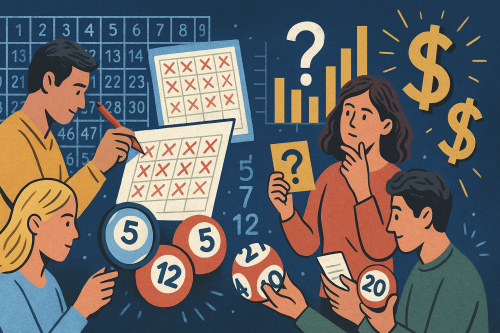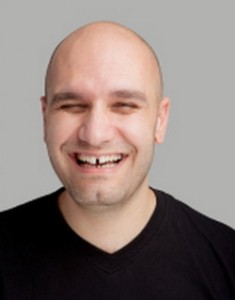Why Some Lottery Numbers Hit More Often—Myth or Math?

The Nature of Randomness in Lotteries
A random draw does not mean perfectly distributed numbers in the short term. True randomness produces streaks, clusters, and sometimes odd repetitions. For example, the number 7 might be drawn in three consecutive Powerball games not because it’s special, but because random events can naturally produce such streaks.
That’s where the illusion begins. Players see a pattern and believe it’s predictive. But each draw is independent, and past outcomes don’t influence future ones, at least not in a properly maintained and tested system.
Hot and Cold Numbers: A Player’s Obsession
Nearly every national lottery provides frequency tables for past winning numbers. In EuroMillions, for example, the number 20 has historically appeared more than others. In the US Powerball, 32 and 61 are considered “hot” numbers. Australia’s Oz Lotto has frequently seen numbers like 33 and 7 topping the charts, while South Africa’s Lotto has shown a surprising repeat pattern with numbers like 16 and 1. Canada’s Lotto 6/49 reports 31 and 34 among its most frequently drawn. This data fuels a variety of strategies—some players chase these popular numbers hoping for repetition, while others avoid them entirely to follow contrarian approaches.
Some of these trends may arise from minor imperfections in draw machines. An investigation into the UK’s early Camelot machines found that ball weight, affected by wear and tear, could slightly influence results. However, modern systems are strictly regulated and regularly audited to reduce these effects.
Strategies Players Use to “Crack” the Lottery
Even though lotteries are games of chance, that hasn’t stopped players from applying various systems to improve their odds. Some strategies are mathematical, others superstitious. Here’s a look at a few of the most common:
Number Frequency Strategy
Players study draw histories and pick the most frequently drawn numbers. While this doesn’t improve odds in a truly random game, some believe it gives them a psychological edge or reduces their chances of splitting the prize with others.
The Wheeling System
One of the most structured strategies is the wheeling system. It involves selecting a larger set of numbers—say, 10—and then using software or tables to create multiple tickets covering all possible combinations of those numbers. The goal is to increase the chance of hitting several numbers within the group, improving your odds of winning smaller prizes and occasionally the jackpot.
Wheeling systems are especially popular in lotteries like Canada Lotto 6/49 and South Africa Lotto, where the cost per ticket is low and the odds are somewhat manageable. However, they come with a cost: the more combinations you play, the more tickets you must purchase.
Balanced Number Strategies
Some players try to choose tickets with a mix of odd and even numbers, high and low numbers, or avoid repeating patterns like 1, 2, 3, 4, 5, 6. While this doesn’t improve your odds of winning, it may reduce the risk of splitting the prize with hundreds of others if such a common sequence is drawn.
Delta System and Lottery Combinations
The delta system is a mathematical approach where players choose differences between numbers rather than numbers themselves. The idea is to create more realistic number spreads based on actual draw patterns. While its success is debated, it offers a systematic way of selecting numbers that avoids clusters.
Real-Life Examples That Fuel the Belief
In 2003, 110 players in South Korea won the same jackpot because they all played the same “lucky” numbers recommended by a popular lottery tipster. The numbers weren’t special—but the pattern created a social echo that spread fast.
In 2010, an analysis of the Polish Lotto found that numbers like 13 and 7 appeared more often than expected over a ten-year span. This led to public debates and accusations of faulty machines, although lottery officials insisted everything was statistically sound.
Perhaps the most famous case of exploiting patterns is that of Stefan Mandel, a Romanian-Australian economist who developed a formula to win the lottery. He legally won the lottery 14 times using mathematical combinations and syndicates before the rules changed.
Why People Keep Believing in Patterns
The appeal of number patterns lies in human psychology. We’re wired to detect meaning, even in randomness. The gambler’s fallacy—the belief that a number is “due”—combined with the confirmation bias of seeing our lucky number win once, keeps the myth alive.
But while the odds of hitting a jackpot remain astronomically low, strategies like wheeling can increase your chances of winning lower-tier prizes. They’re not magic, but they do turn blind luck into structured play.
The Final Word
Whether you’re tracking hot numbers, wheeling dozens of combinations, or simply choosing birthdays, the draw remains a game of chance. Some numbers may hit more often—but not because they’re lucky. They’re just random results that happened to repeat.
Still, for those who enjoy the thrill of the game and the belief in systems, exploring strategies like wheeling or statistical combinations adds an extra layer of excitement. Just remember: no method guarantees a win. But some may help you play smarter—and that’s always a good bet.

Jonathan White is the founding editor of LotteryPros and one of the original voices behind the platform. With extensive experience in both lottery journalism and digital publishing, Jonathan helped shape the site’s mission of transparency and unbiased reporting. He specializes in reviewing global lottery platforms, analyzing industry trends, and guiding the editorial vision of LotteryPros. His work has set the standard for clarity, fairness, and player-first reporting since day one.